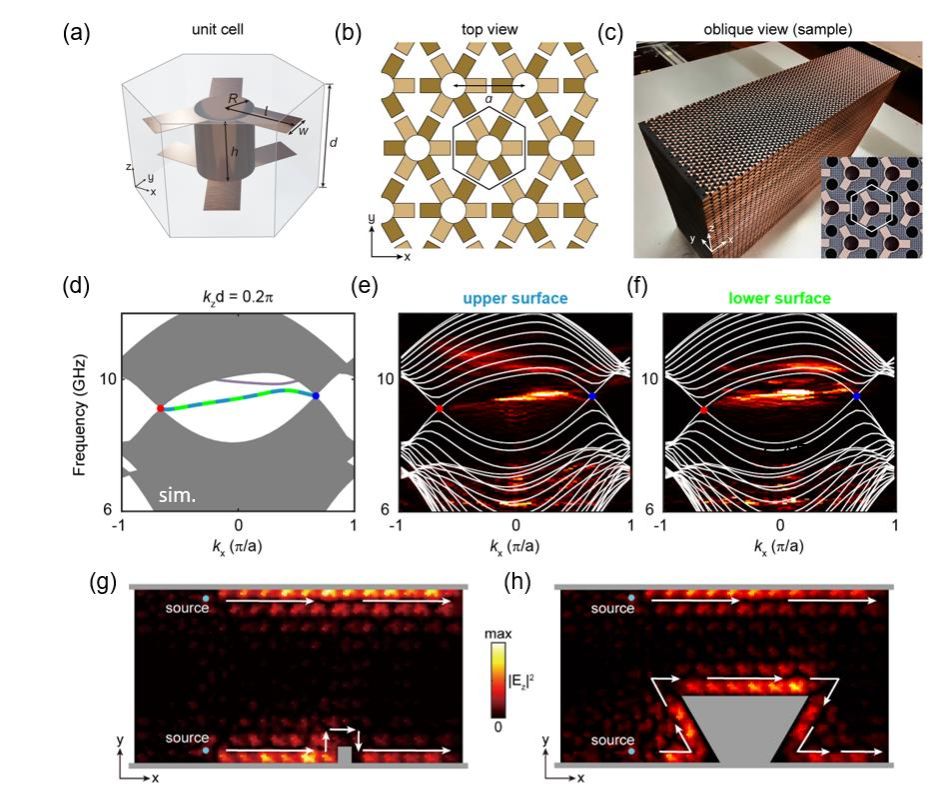Due to the feature of defect immune and unidirectional transmission, the chiral edge states in topological materials have attracted tremendous attention in condensed matter physics as well as in photonics. Benefit from this unique feature, promising applications, aiming at low loss optical transmission, have been proposed and demonstrated, such as robust waveguiding and high-performance lasing. Recently, a new kind of topological edge state, the antichiral edge state, has been proposed. Inheriting the unique feature of unidirectional transmission, the antichiral chiral edge states were found to co-propagate along the parallel edges of a 2D strip, which can provide more flexibilities in molding the flow of light. However, the previous scheme to realize antichiral edge states in photonic systems is rather challenging due to their needs for time-reversal breaking.
To overcoming such dilemma, the research group of Prof. Jian-Wen Dong and Prof. Wen-Jie Chen proposed a new scheme to realize the antichiral surface states in a three-dimensional photonic metacrystal preserving time reversal symmetry. Skillfully, the research group utilizes the vertical dimension to introduce the gauge magnetic field for realizing the antichiral edge states in two-dimensional subsystems. The introduction of gauge magnetic field avoids the need for practical magnetic field and thus preserves the time-reversal symmetry, which is more favorable for optical device.
Experimentally, the antichiral surface states have been demonstrated through the metacrystal prepared by stacking the printed circuit boards (PCBs) in vertical direction (see Figs. 1(a)-1(c)). Associated characteristic band dispersions are observed via the microwave near-field scanning technique and Fourier analysis method (Figs. 1(d)-1(f)). The experimental results agree well with the simulated ones. Moreover, the robust antichiral transport behaviors are demonstrated. As shown in Figs. 1(g, h), when encounter a scatterer or a sharp bending in the transmission path, the light will bypass the scatterer/bending and cause no backscattering.

Fig. 1. The unit cell (a) and the top view (b) of the metacrystal. (c) Photograph of the experimental sample. (d) Simulated antichiral surface dispersion. The blue dashed line represents the dispersion at upper surface and the green dashed line represents the one at lower surface. (e, f) Corresponding experimental result of the antichiral surface dispersion. (g, h) Unidirectional antichiral surface transport when encountering scatterer and sharp bending, respectively.
This work is published in Nature Communications entitled “Antichiral surface states in time-reversal-invariant photonic semimetals”. Doctoral student Jian-Wei Liu is the first author. Prof. Jian-Wen Dong and Prof. Wen-Jie Chen are corresponding authors. Associate Professor Xiao-Dong Chen and Associate Professor Ke Chen make important contributions in this research. This study was supported by National Natural Science Foundation of China, Guangdong Basic and Applied Basic Research Foundation, etc. Also, the School of Physics and the State Key Laboratory of Optoelectronic Materials and Technologies gave significant support to this work.
Link to the paper: https://doi.org/10.1038/s41467-023-37670-y
